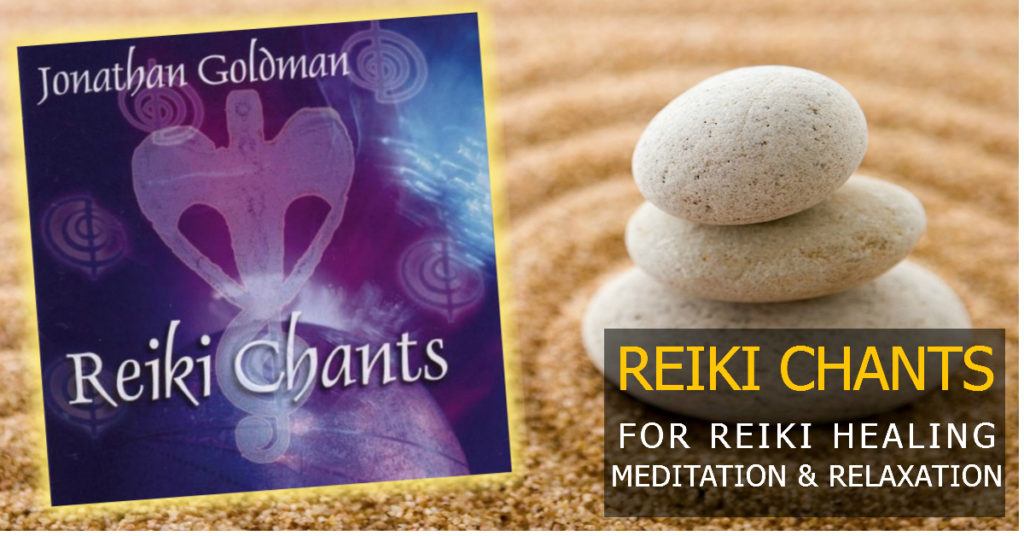 Testing a 2,500-year old hypothesis:
Testing a 2,500-year old hypothesis:
If music breathes new life into old blood…play on!
by John Stuart Reid
In 2007, having been greatly impressed by Jonathan Goldman’s Reiki Chants album, I commissioned a special limited edition, with Jonathan’s permission, re-titling it The Healing, because I intuited that it had special healing qualities. Recently, without me mentioning my intuition concerning Jonathan’s music, I learned that a friend had chosen to play a track from his Reiki Chants album during a distant healing session for the wife of a colleague who has a life-threatening illness. Therefore, you may well imagine that I felt the music choice for the healing session to be Divinely inspired. (The Healing album was created as a limited edition and is no longer available but Jonathan’s Reiki Chants album is still available.)
I recently put Jonathan’s The Healing (aka Reiki Chants album) to the test by including it in a series of blood experiments I designed, based on Pythagoras’ belief that music can be used in place of medicine and that music contributed greatly to health.
The experiment involved decanting a test tube of whole blood into two glass vials, immersing one in a very quiet environment for 20-minutes while the other vial was immersed in music for 20-minutes, both vials being kept at normal blood temperature throughout. The red blood cells in both vials are then counted with an automatic cell counter device (which counts live red blood cells and dead red blood cells). To carry out this test the blood is first diluted to a sufficient degree, then mixed with a blue stain that can penetrate only red blood cells that have lost their membrane integrity, that is, cells that are beginning to die. Those cells are counted as “dead” by the cell counter, while cells that are not penetrated by the stain are counted as “live”.
The results were extraordinary and Jonathan’s music yielded one of the highest red blood cell counts when compared with the red blood cell count in the quiet environment. The question is, why does 20-minutes music immersion cause a significantly higher red blood cell count than blood kept in a quiet environment? Hypothetically, in vitro blood contains three classes of red blood cells: dead, living and transitory. The transitory red blood cells are beginning to lose their vitality and have lost some of their membrane integrity, allowing the blue stain to penetrate, therefore being counted as “dead”. But immersion in music “repairs” membrane integrity to the extent that the blue stain cannot penetrate, thus, tens of thousands and in some cases hundreds of thousands of red blood cells per millilitre of blood are counted as living when previously they would have been counted as dead.
Click Here to Read the Full Scientific Article
The mechanism that underpins music’s ability to “repair” red blood cell membranes is, as yet, unknown but may relate to increased oxygen uptake by those red blood cells that are in the transitory phase (obviously the same mechanism also would also cause the living red blood cells to absorb more oxygen). In this scenario, low frequency pressure waves within music mimic the pressure waves of heart beats, enabling the proteins within the red blood cell membranes to experience the music’s bass beat as a surrogate heart, thus supporting the membrane repair process.
Although the experiments have so far shown that blood in vitro can be re-invigorated by immersion in music, does a similar mechanism also occur in vivo when a person is immersed in music or in other sounds, such as those from Crystal Bowls, Himalayan bowls, low-pitched tuning forks etc? Hopefully, that question will be answered in a future series of experiments, in which the aim will be to identify the particular frequencies within Jonathan’s Reiki Chants album, and within other music selections tested, which contributed to the significant increase in red blood cell count.
Regarding the medical implications of this research, if similar results are obtained in vivo, the possibilities of using music as a means of creating beneficial biological changes in a patient or client will become evident. Music Therapy is a clinical discipline that focuses on, for example, supporting patients with depression or relieving anxiety during the pre and post-operative phases of a patient’s hospitalization. Music Therapy is generally defined as an intervention in which “the therapist helps the client to promote health, using music experiences and the relationships developing through them.” Many studies have been conducted that demonstrate the efficacy of Music Therapy, but now, interest is growing in the field of Music Medicine, which, as its name implies, focuses on the demonstrable benefits of music as treatment for specific maladies; one definition is, “listening to music without the presence of a therapist.” A Cochrane analysis of twenty-six Music Medicine clinical trials with a total of 1369 participants, titled, Music for stress and anxiety reduction in coronary heart disease patients, concluded that “listening to music may have a beneficial effect on systolic blood pressure and heart rate in people with coronary heart disease and appears to be effective in reducing anxiety in people with myocardial infarction.” The same report mentioned, “Listening to music may reduce pain and respiratory rate and appears to improve patients’ quality of sleep following a cardiac procedure or surgery.” Johns Hopkins Medicine also acknowledges the role of music in addressing illness and indicates a range of illnesses they aim to treat with music, including, Huntingdon Disease, Parkinson’s Disease and Dementia.
However, the present study, concerning the positive effects of music on blood, may indicate the need for an expanded definition of Music Medicine in which the entire body of the client or patient, or a specific part of the body, is immersed in music at a specific sound pressure level. Such immersion in a music field, or in specific sound frequencies, may provide important beneficial biological and physiological effects. If music breathes new life into old blood…play on!









